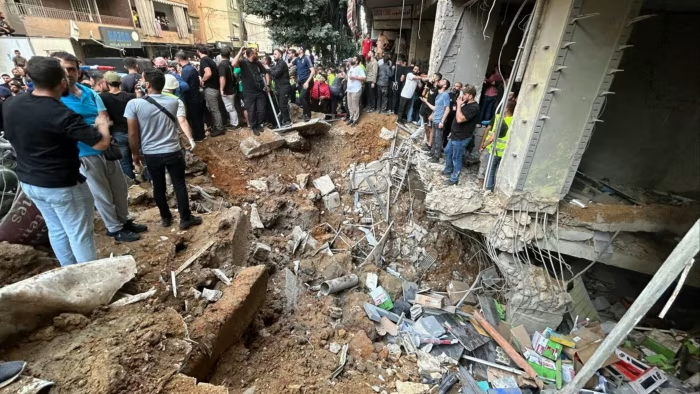Senior Hamas members have denied reports that the group’s Gaza battalions have been significantly degraded, days after the Israeli military said five influential Hamas commanders had been killed.
Last week, Israel’s military released an annotated photo that it said included the names and faces of recently slain Hamas commanders who led battalions and brigades in northern Gaza.
The photo, which was posted on X, claimed that the commanders were responsible for planning and executing attacks against Israel, and that their deaths were a “significant blow” to Hamas’s military capabilities.
However, Hamas sources told Al Jazeera that the photo was “fabricated” and that the commanders were still alive and leading the resistance against Israel’s ongoing assault on Gaza.
The sources said that the photo was part of Israel’s “psychological warfare” to demoralize the Palestinians and to cover up its failure to achieve its objectives in Gaza.
They also said that Hamas had taken precautions to protect its commanders and fighters from Israel’s intelligence and airstrikes, and that it had managed to inflict heavy losses on the Israeli army and civilians.
According to Hamas, more than 1000 Israeli soldiers and settlers have been killed by its rockets and anti-tank missiles, while more than 3,000 have been injured.
Hamas also said that it had destroyed dozens of Israeli tanks, armored vehicles, drones, and warplanes, and that it had targeted Israel’s nuclear reactor, airport, and gas platforms.
Hamas’s claims, however, could not be independently verified, as Israel has imposed a strict media blackout on its casualties and damages.
Israel, on the other hand, has said that it has killed more than 6,000 Hamas fighters and commanders, and that it has destroyed more than 1,000 rocket launchers, tunnels, and weapons depots.
Israel has also said that it has intercepted more than 90% of the rockets fired by Hamas, and that it has minimized the civilian casualties and damages on its side.
According to Israel, 1400 people have been killed by Hamas’s rockets, while more than 1000 have been injured.
Unprecedented
Israel has also said that it has inflicted “unprecedented” damage on Hamas’s infrastructure and governance, and that it has degraded its ability to launch future attacks.
Israel’s military campaign, which began on October, has been met with widespread condemnation and calls for a ceasefire from the international community, human rights groups, and civil society organizations.
The campaign, which was triggered by Israel’s actions in Jerusalem, where it sought to evict Palestinian families from their homes and clashed with worshippers at the Al-Aqsa Mosque, one of Islam’s holiest sites, has killed more than 18,000 Palestinians and displaced more than 1,800,000 in Gaza.
The campaign has also destroyed or damaged more than 1,500 buildings, including residential towers, schools, hospitals, and media offices, and has left Gaza with a severe shortage of water, electricity, and medical supplies.
The UN has warned that the humanitarian situation in Gaza is “dire” and that the risk of a “large-scale outbreak” of COVID-19 is high.
The UN has also said that the campaign may amount to war crimes and crimes against humanity, and that both sides must respect the principles of international law and human rights.
The UN has called for an immediate and unconditional ceasefire, and for the resumption of the peace talks based on the two-state solution, which envisions the creation of an independent Palestinian state alongside Israel.
However, both Israel and Hamas have rejected the calls for a ceasefire, and have vowed to continue the fighting until they achieve their goals.
Israel has said that it will not stop until it restores calm and security to its citizens, and until it eliminates Hamas’s threat.
Hamas has said that it will not stop until it ends Israel’s occupation, siege, and aggression, and until it secures the rights and dignity of the Palestinians.








